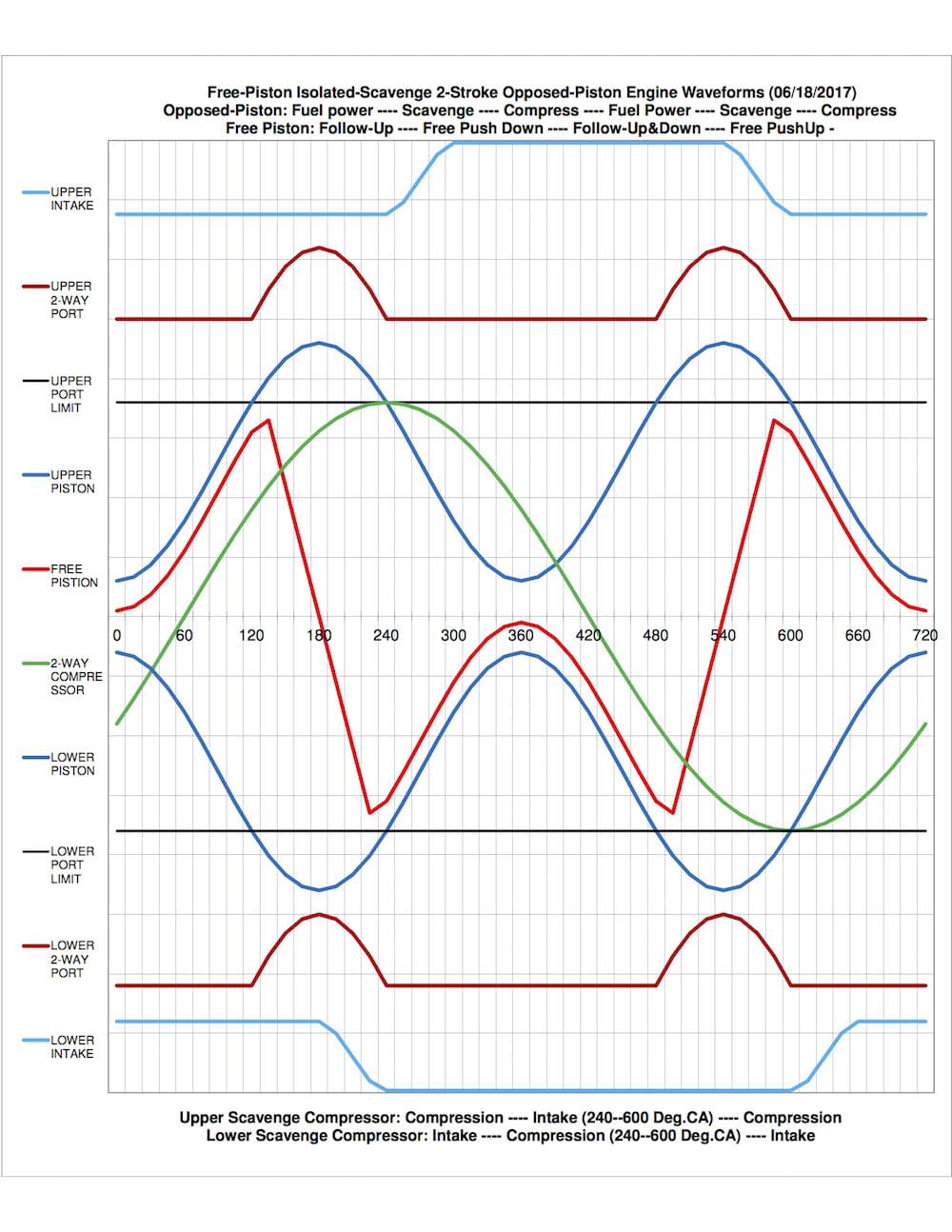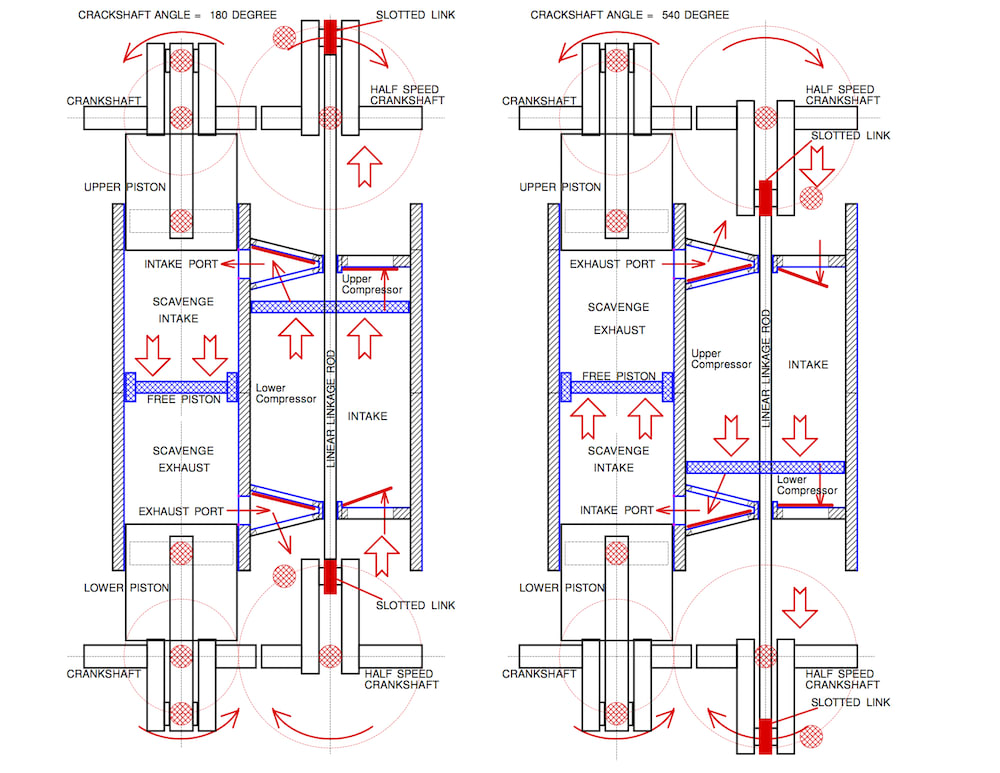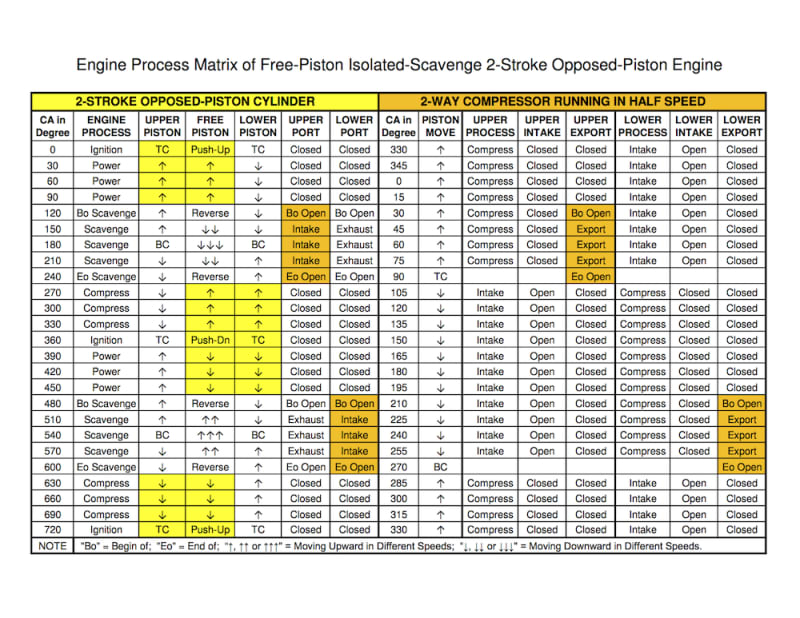This invention presents an isolated way to implement scavenge in 2-stroke opposed-piston engine ----- by a free-piston running between two opposed- pistons. During scavenge process, the incoming fresh charge would always be sealed and separated from the burnt gas by the free piston. The result could be not only eliminating the mixing of the fluids, but also blocking fresh charge from leaking into exhaust port. As a result, isolated-scavenge will help to realize idea pure-displacement scavenge model, yielding the highest charging efficiency and perfect scavenge process.
The engine architecture related to the present invention is a conventional 2-stroke opposed-piston engine, which is mature and has had many designs and applications. The scavenge of such engine is always in uni-flow mode. Yet we have to make the uni-flow and the scavenge ports working bidirectionally. Refer to Fig.1 for a matrix of its engine processes. Refer to Fig. 2 for its working wave-forms.
The free-piston is a short piston being inserted between to opposed-pistons, which seals and isolates the gases from its two sides. During compression process or power process, the free-piston would be pushed to attach to one of the opposed-pistons by the cylinder pressure. During scavenge process, as it approaches the scavenge port, it would be pushed toward the exhaust port by the incoming scavenge flow and pressure, until it reaches and attaches to the opposed-piston in the other side. The scavenge is designed as bi-directional format so that the free-piston could go back-and-forth between two opposed-pistons, as the red trace shown in Fig. 2.
A double-acting piston compressor is designed to implement the required bi-directional uni-flow scavenge. This compressor is running at the half speed of the 2-stroke engine. Its TC aligns with the closing phase of upper port limit line of the opposed-piston, 240-degree CA; its BC aligns with the closing phase of the lower port limit line, 600-degree CA. During 600 to 240-degree of CA, its upper portion compresses the fresh charge; while lower portion intakes the fresh charge. Once the upper port is open between 120 and 240-degree CA, the compressed fresh charge would rush into the cylinder for scavenge, pushing the free-piston downward, while the lower port works as exhaust port. Alternatively, during 240 to 600-degree of CA, its lower portion compresses the fresh charge; while upper portion intakes the fresh charge. Once the lower port is open between 480 and 600-degree CA, the compressed fresh charge would rush into the cylinder for scavenge, pushing the free-piston upward, while the upper port works as exhaust port.
This invention combines the benefits of both 2-stroke opposed-piston engine and 4-stroke engine together. No fuel mixture flow short-circuit would yield nice emission performance as well as lower fuel consumption. Low-cost low-pressure ported gasoline injection and closed-loop Lambda control could be applied to 2-stroke engine, making it as popular as 4-stroke engines on the road and in every aspect of engine sizes and applications. Turbocharge or supercharge could also be applied, or naturally integrated, without charge over-delivery penalty.
Like this entry?
-
About the Entrant
- Name:Yuanping Zhao
- Type of entry:teamTeam members:Yuanping Zhao Charles He Biyun Zhou Jason Zhao Jerry Zhao
- Software used for this entry:EXCEL
- Patent status:pending








